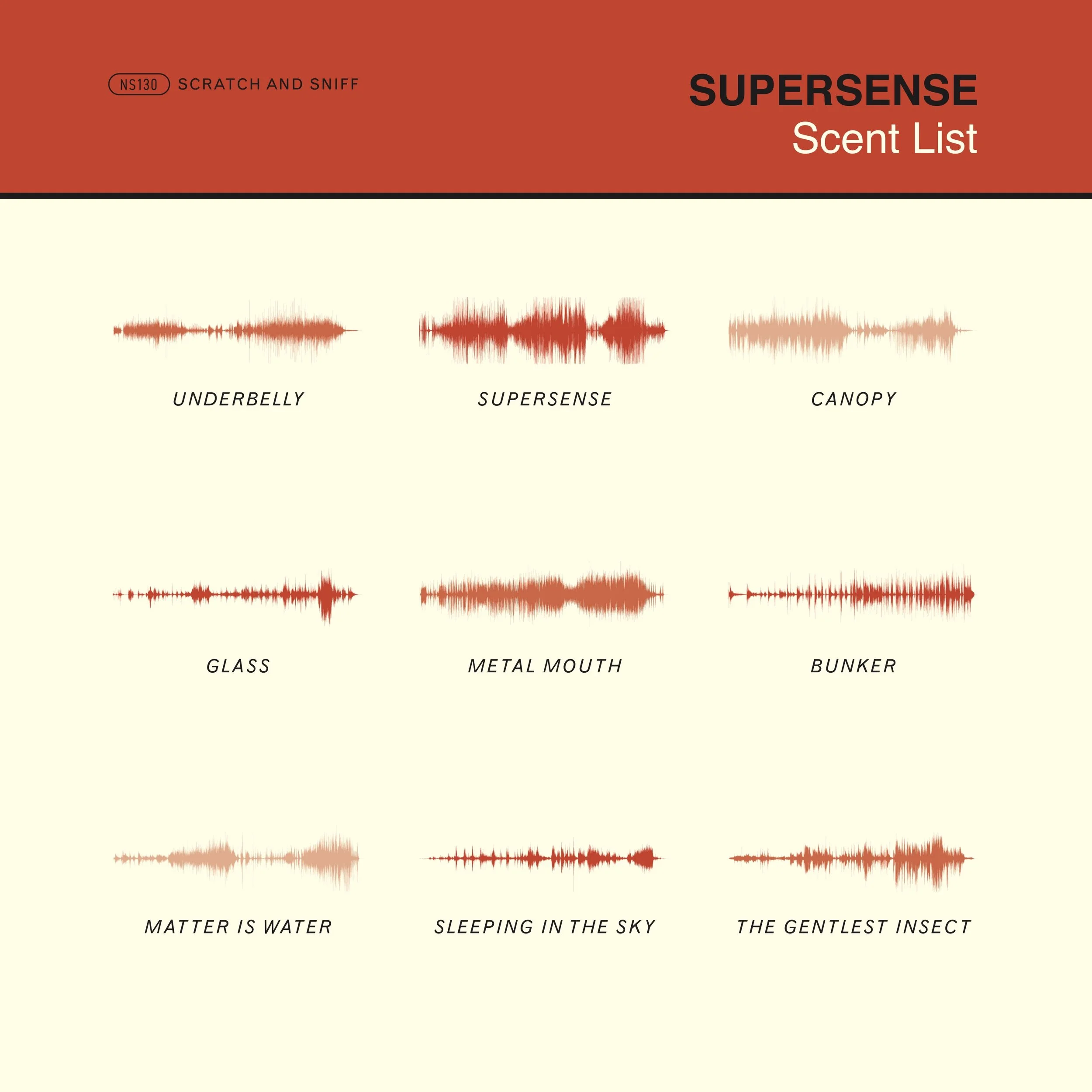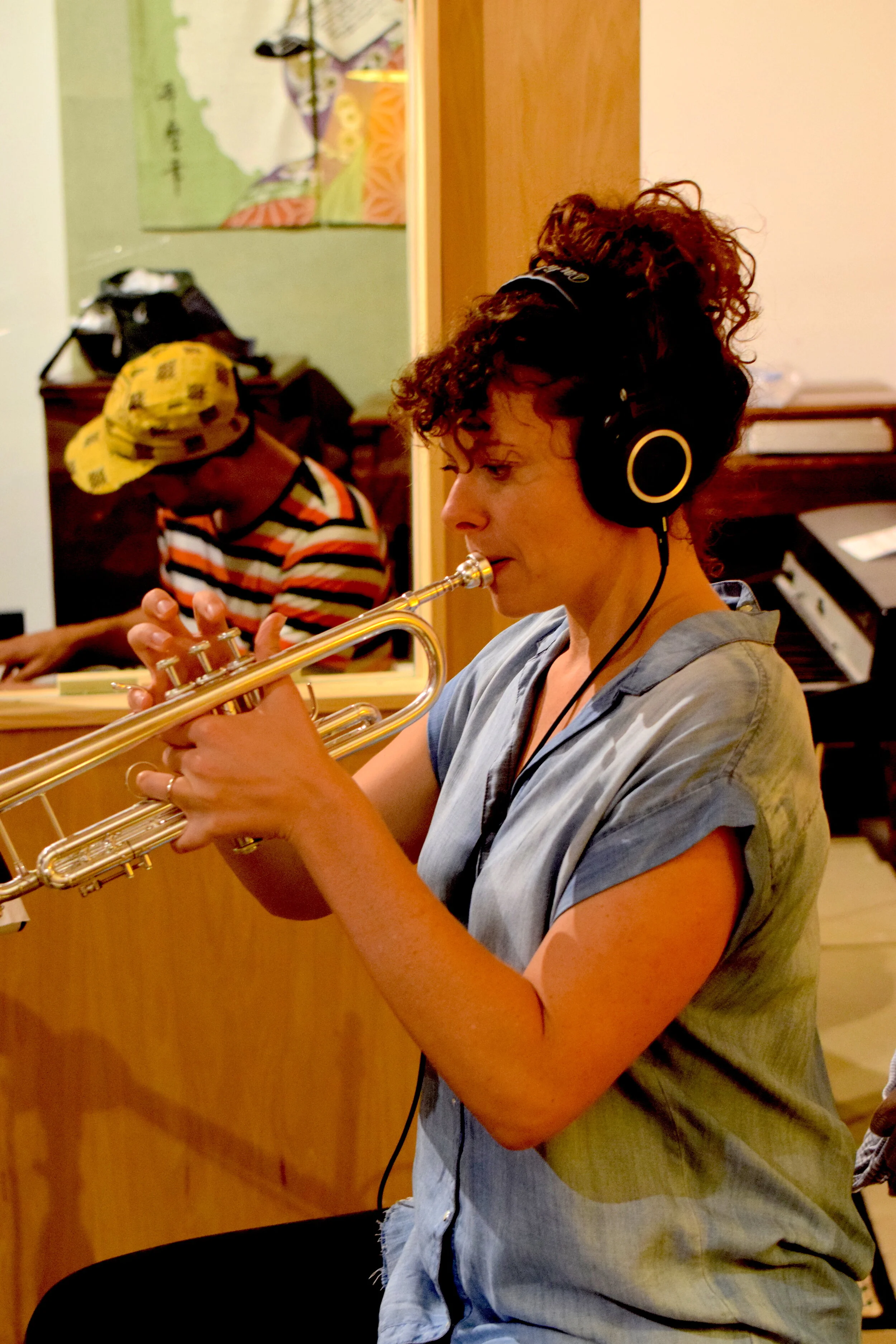STEPH RICHARDS SUPERSENSE
Liner notes Booklet
—Steve Smith
Defining precisely what music is can be a thankless task, but one thing pretty much everyone might agree upon is that it fundamentally is an auditory phenomenon. Still, our appreciation of music also taps into a wider world of senses all the time, metaphorically speaking. We perceive visual cues, registering music as bright or murky, red-hot or bluesy; painters and sculptors routinely attempt to render music in oil or steel, while musicians employ lighting effects to enhance their aural creations. We allude to our sense of taste when describing some especially pleasing concord or piquant gesture. We employ aspects of touch when perceiving music as hard or soft. Auditory phenomena can convey musical intent: we literally feel high notes deep inside our ears, while bass drops rumble and punch our guts palpably.
Olfactory input seems slight by comparison, apart from scents associated with the places where music is made, the people inhabiting those places, and the activities of those people: eating, smoking, sweating. (There also is that well-worn metaphorical marker of quality: this stinks.) But biological research indicates that sound and smell are cross-wired at a primal level in humans, suggesting elemental imperatives that modern humans have evolved beyond.
Evolution is exactly what the improvising trumpeter, composer, and bandleader Steph Richards has in mind in her newest project, SUPERSENSE, created in collaboration with Sean Raspet, an artist who works in flavor and fragrance. Raspet’s art, rooted in chemistry and philosophy, engages human perception on multiple levels. Richards, a creator whose musical practice has incorporated elements of vision and motion, sought a new physical dimension in these compositions, exploring how scent perception may transform musical output and the listening experience.
“Much like music, I believe that scent art is a performative one: scents and music must be performed to exist,” Richards wrote. “I believe that the act of smelling is the performance of perfume, the act of hearing is the performance of music. I also believe that the powerful olfactory sense can trigger improvising musicians to take their music in new and important directions, and deepen our global connection to music in the moment.”
Richards, whose past collaborators include Anthony Braxton, David Byrne, Yoko Ono, Kanye West, and Henry Threadgill, is no stranger to evolutionary notions. For SUPERSENSE, she enlisted a first-call team of similarly versatile colleagues. Occupying the piano bench is Jason Moran, a MacArthur fellow whose creative output encompasses music, visual art, video, and more. Bass guitarist Stomu Takeishi has provided supple, sinuous support to artists like Henry Threadgill, Paul Motian, and Myra Melford; drummer and percussionist Kenny Wollesen, a veteran of countless John Zorn projects, has also worked alongside Tom Waits, Sean Lennon, and Bill Frisell.
With Raspet signed on to participate, Richards incorporated scent cues into the scores she wrote for her quartet, and had the musicians answer to olfactory prompts during the recording. In live performances, she intends to have the scents diffused into the concert space, so that audiences can perceive and interpret the smells. And in this present recording, Richards has arranged to integrate Raspet’s contributions through scratch-and-sniff ink.
Richards is privy to the secret ingredients that went into the blending of each fragrance and odor involved in SUPERSENSE—but she’s not telling. As you listen, you might ask yourself: Does the title track’s subtle aroma correspond with the fitfully slinky beat and chameleonic mood swings? Does the fruity aroma of “Canopy” line up with Richards’s gnarled figurations, and her band’s tension-and-release backing? What olfactory elements conspired to provoke the rasp and gleam of “Metal Mouth”?
Richards notes that some scents were designed as inspirational prompts, and others functioned like conversational counterpoint. Resist the urge to imagine literal correspondence, she suggests, and instead let your senses be saturated by an ensemble of scent and sound. Your response is a matter of individual interpretation. But what’s certain is that Richards – like all explorers involved in evolutionary change – has conceived a provocative thesis, assembled a team of collaborators amply endowed with creativity and curiosity, and achieved results that are certain to spark contemplation and conversation.
That the music on SUPERSENSE works beautifully on its own comes as no surprise, given its participants. But here, the satisfaction perceived by the ear is matched by the novel adventure of being led around by the nose. Breathe deeply, and allow your mind to wander.



